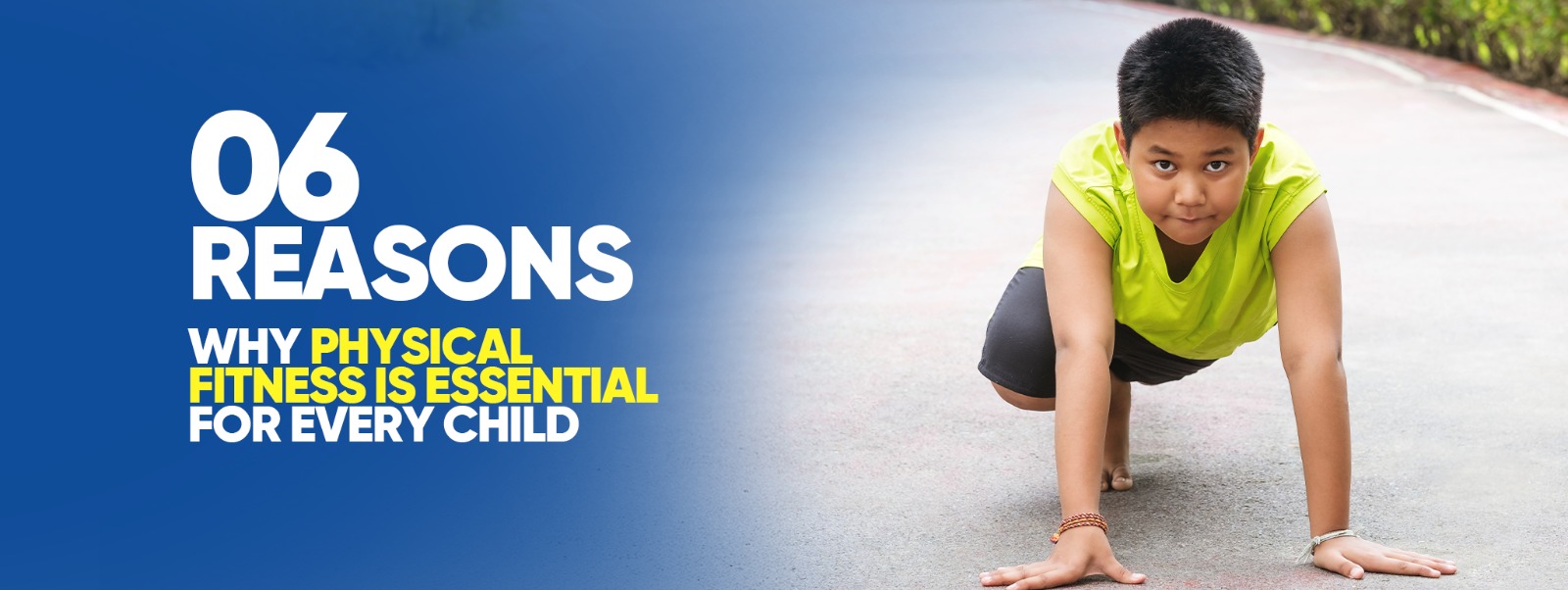
If childhood were a video game, physical activity would be the ultimate power-up. Kids are born with endless energy-like tiny whirlwinds wrapped in sneakers. They jump, tumble, spin, and sprint with a kind of joyful chaos that adults can only envy. But what if we told you that all that movement isn’t just play-it’s progress!
Physical fitness isn’t just about sports days or the occasional dance class. It’s a core building block for a child’s growth. Think of it as the magic glue that helps kids become healthier, smarter, happier, and more confident versions of themselves.
Let’s dive into the world of childlike movement and discover why physical fitness might just be a child’s greatest superpower.
1. Builds Strong Bodies (and Mighty Muscles)
From the moment they learn to crawl, children are on a mission: to explore, to conquer, to climb that one bookshelf they really shouldn’t. But every wiggle, tumble, and swing is shaping them–literally.
Physical activity helps children develop:
-
A stronger heart and better blood circulation
-
Healthy lungs that power every game of tag
-
Resilient bones and joints for growing bodies
-
Improved coordination, balance, and agility
These aren’t just sports-specific skills. They’re life skills—essential for lifting school bags, climbing stairs, and yes, even learning how to stand up after falling (literally and emotionally).
Pro-tip for parents: A 30-minute daily dose of movement—be it bike riding, swimming, or tree climbing—goes a long way in building lifelong health.
2. Unlocks Brain Boost Mode
Movement fuels the brain. When kids move, the heart pumps more oxygen to the brain. This jumpstarts everything from memory to focus to creativity. In other words, when kids run, skip, or stretch, they’re not just exercising—they’re learning better.
Physically active kids often show:
- Sharper focus in class
- Better performance on tests
- Improved reading and math skills
- Faster problem-solving and decision-making
So next time, your child does a victory dance in the living room? Don’t stop them. You might be watching a future innovator getting a creativity boost.
Fun Fact: Just 20 minutes of moderate physical activity before a study session can double the attention span in some children.
3. Lifts Mood, Lowers Stress, Builds Confidence
Ever noticed how kids light up after a good play session? That’s not a coincidence. That’s brain chemistry in action. Physical activity triggers the release of:
- Endorphins – the “feel-good” hormones
- Serotonin – the “stay-calm” chemical
- Dopamine – the “reward-me” motivator
These aren’t just mood boosters. They’re emotional superchargers that help kids:
- Shake off anxiety
- Reduce symptoms of depression
- Feel more confident
- Sleep better at night
A child who climbs a rope they feared or runs a little faster than yesterday isn’t just getting fit—they’re becoming braver and more self-assured with every step.
4. Teaches Social Smarts & Team Spirit
Children don’t just play to burn energy—they play to connect. Games, sports, and physical group activities are like undercover training grounds for important life lessons:
- Taking turns and sharing
- Working in teams
- Resolving conflicts
- Celebrating wins (and learning from losses)
Even a simple game of catch teaches eye contact, timing, communication, and encouragement. In a world full of screens, physical play brings kids back to each other—and that’s priceless.
5. Builds Grit, Resilience & Goal-Setting Skills
You can’t always win the race. You can’t always climb the highest. But here’s what fitness teaches kids: you can always try again. Physical activity builds mental muscle:
- Grit – the courage to push past discomfort
- Patience – the ability to learn over time
- Discipline – sticking to routines and practice
- Resilience – bouncing back from failure
These are character traits that no textbook can teach—but every soccer match, obstacle course, or dance recital will. That’s how kids go from “I can’t” to “I did.”
6. Helps Build a Lifetime Habit of Health
The habits we form in childhood often stick. That’s why building a relationship with the movement early in life matters. Active kids are:
- Less likely to struggle with weight-related issues
- More likely to have strong bones into adulthood
- At lower risk for chronic illnesses like diabetes and heart disease
- More tuned in to their body’s needs—like rest, hydration, and nutrition
Fitness isn’t just a phase. It’s the first step toward a healthier, longer life.
So, What’s the Final Takeaway?
Kids don’t need perfect form, fancy gyms, or gold medals. They just need freedom to move, encouragement to explore, and time to play.
At Kiran International School, we believe in nurturing not just bright minds but healthy, happy, and active young individuals. Our curriculum includes regular physical education, sports activities, and movement-based learning because we know that a fit child is a focused and flourishing child. Because physical fitness isn’t a luxury. It’s not optional. It’s essential. It shapes bodies, sparks minds, stabilizes emotions, and strengthens spirits.
So let them dance in the rain. Let them climb trees. Let them race the wind. Because every jump, every spin, every cartwheel—they’re not just playing.
Want to know how we make movement magical at Kiran International School? Visit us or book a campus tour today!





